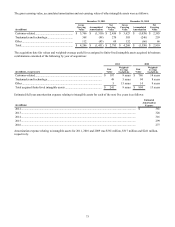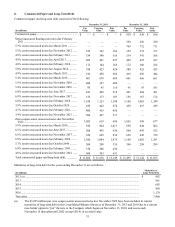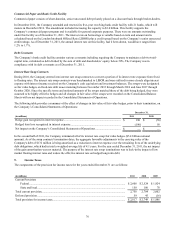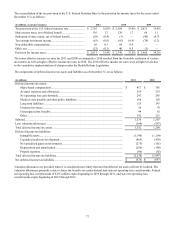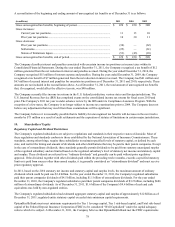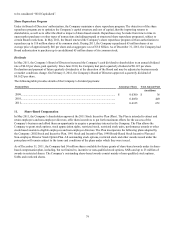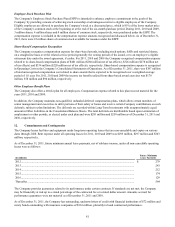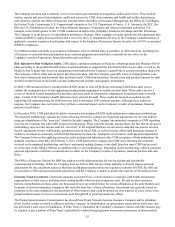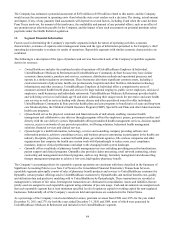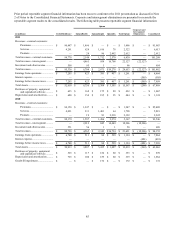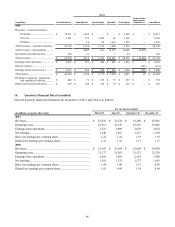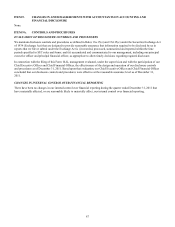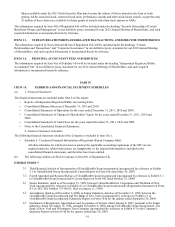United Healthcare 2011 Annual Report Download - page 85
Download and view the complete annual report
Please find page 85 of the 2011 United Healthcare annual report below. You can navigate through the pages in the report by either clicking on the pages listed below, or by using the keyword search tool below to find specific information within the annual report.83
The Company has been and is currently involved in various governmental investigations, audits and reviews. These include
routine, regular and special investigations, audits and reviews by CMS, state insurance and health and welfare departments,
state attorneys general, the Office of Inspector General (OIG), the Office of Personnel Management, the Office of Civil Rights,
the Federal Trade Commission, U.S. Congressional committees, the U.S. Department of Justice, U.S. Attorneys, the SEC, the
IRS, the U.S. Department of Labor, the Federal Deposit Insurance Corporation and other governmental authorities. For
example, in the fourth quarter of 2011, CMS conducted an audit of the Company's Medicare Advantage and Part D business.
The Company is in the process of responding to preliminary findings. Other examples of audits include the risk adjustment data
validation (RADV) audits discussed below and a review by the U.S. Department of Labor of the Company’s administration of
applicable customer employee benefit plans with respect to the Employee Retirement Income Security Act of 1974, as amended
(ERISA) compliance.
Government actions can result in assessment of damages, civil or criminal fines or penalties, or other sanctions, including loss
of licensure or exclusion from participation in government programs and could have a material adverse effect on the
Company’s results of operations, financial position and cash flows.
Risk Adjustment Data Validation Audits. CMS adjusts capitation payments to Medicare Advantage plans and Medicare Part D
plans according to the predicted health status of each beneficiary as supported by data from health care providers as well as, for
Medicare Part D plans only, based on comparing costs predicted in the Company's annual bids to actual prescription drug costs.
The Company collects claim and encounter data from providers, who the Company generally relies on to appropriately code
their claim submissions and document their medical records. CMS then determines the risk score and payment amount for each
enrolled member based on the health care data submitted and member demographic information.
In 2008, CMS announced that it would perform RADV audits of selected Medicare Advantage health plans each year to
validate the coding practices of and supporting documentation maintained by health care providers. These audits involve a
review of medical records maintained by providers and may result in retrospective adjustments to payments made to health
plans. Certain of the Company’s health plans have been selected for audit. These audits are focused on medical records
supporting risk adjustment data for 2006 that were used to determine 2007 payment amounts. Although these audits are
ongoing, the Company does not believe they will have a material impact on the Company’s results of operations, financial
position or cash flows.
In December 2010, CMS published for public comment a new proposed RADV audit and payment adjustment methodology.
The proposed methodology contains provisions allowing retroactive contract level payment adjustments for the year audited
using an extrapolation of the “error rate” identified in audit samples. The Company has submitted comments to CMS regarding
concerns the Company has with CMS’ proposed methodology. These concerns include, among others, the fact that the proposed
methodology does not take into account the “error rate” in the original Medicare fee-for-service data that was used to develop
the risk adjustment system. Additionally, payments received from CMS, as well as benefits offered and premiums charged to
members, are based on actuarially certified bids that did not include any assumption of retroactive audit payment adjustments.
The Company believes that applying retroactive audit and payment adjustments after CMS acceptance of bids undermines the
actuarial soundness of the bids. On February 3, 2011, CMS notified the Company that CMS was evaluating all comments
received on the proposed methodology and that it anticipated making changes to the draft, based on input CMS had received.
As of the date of this filing, CMS has not published the revised methodology. Depending on the methodology utilized, potential
payment adjustments could have a material adverse effect on the Company's results of operations, financial position and cash
flows.
The Office of Inspector General for HHS has audited our risk adjustment data for two local plans and has initially
communicated its findings. While the Company does not believe OIG has governing authority to directly impose payment
adjustments for risk adjustment audits of Medicare health plans operated under the regulatory authority of CMS, the OIG can
recommend to CMS a proposed payment adjustment, and the Company is unable to predict the outcome of this audit process.
Guaranty Fund Assessments. Under state guaranty assessment laws, certain insurance companies (and health maintenance
organizations in some states), including those issuing health (which includes long-term care), life and accident insurance
policies, doing business in those states can be assessed (up to prescribed limits) for certain obligations to the policyholders and
claimants of insolvent insurance companies that write the same line or lines of business. Assessments are generally based on
premiums in the state compared to the premiums of other insurers, and could be spread out over a period of years. Some states
permit member insurers to recover assessments paid through full or partial premium tax offsets.
The Pennsylvania Insurance Commissioner has placed Penn Treaty Network America Insurance Company and its subsidiary
(Penn Treaty), neither of which is affiliated with the Company, in rehabilitation, an intermediate action before insolvency, and
has petitioned a state court for liquidation. If Penn Treaty is liquidated, the Company’s insurance entities and other insurers may
be required to pay a portion of Penn Treaty’s policyholder claims through guaranty association assessments in future periods.


